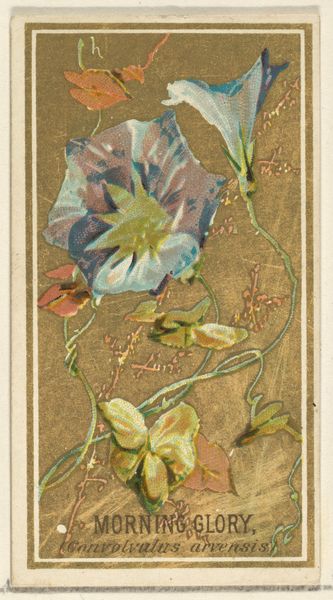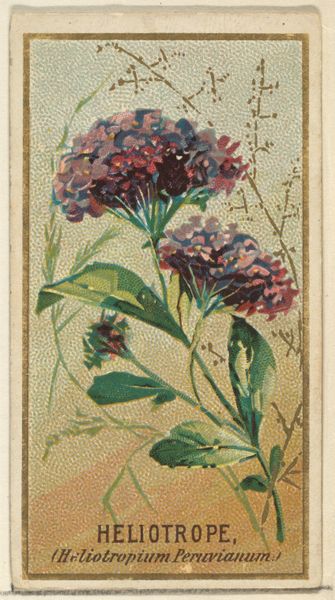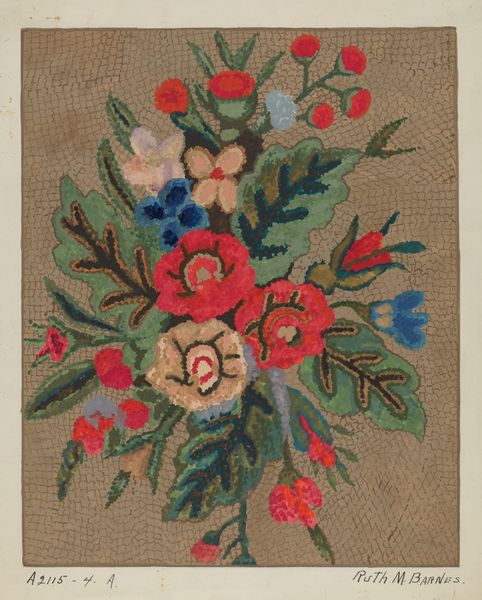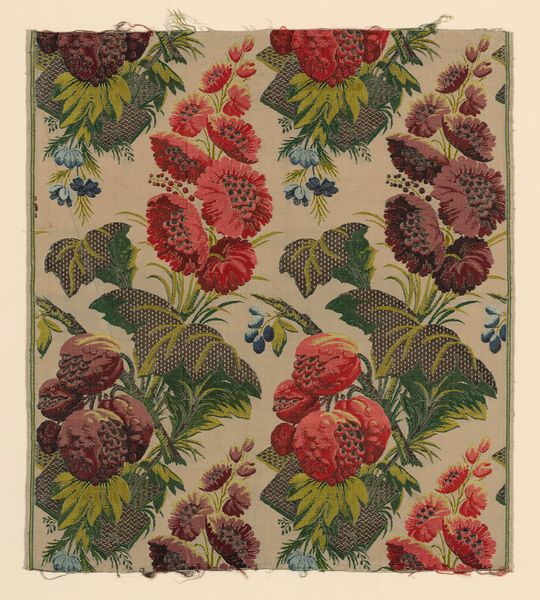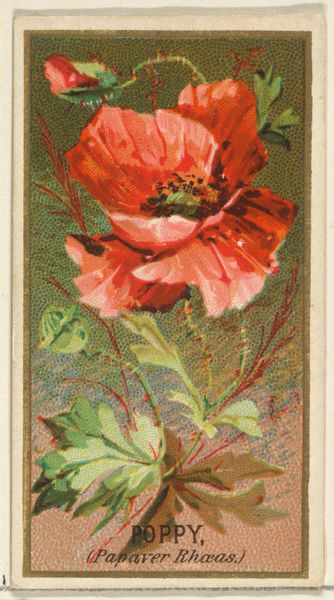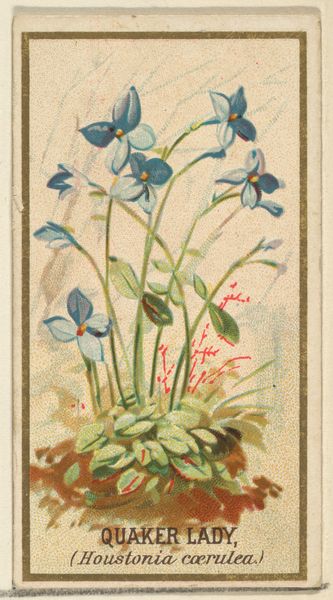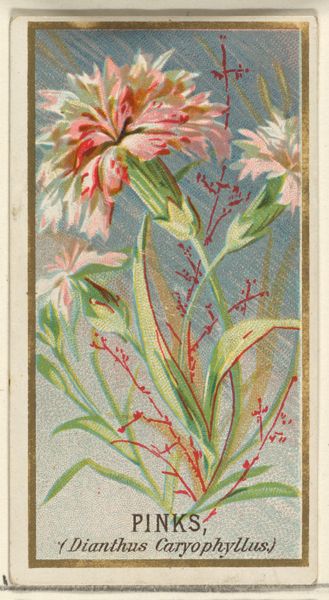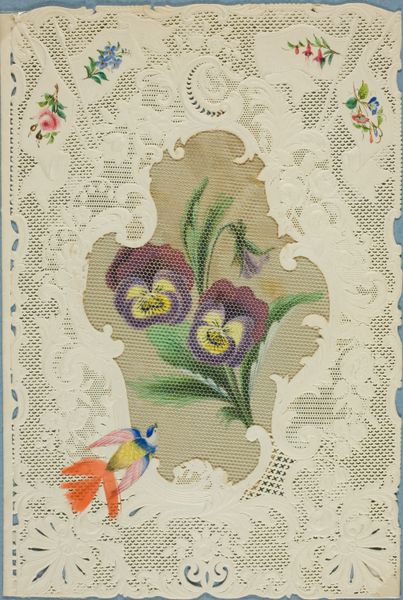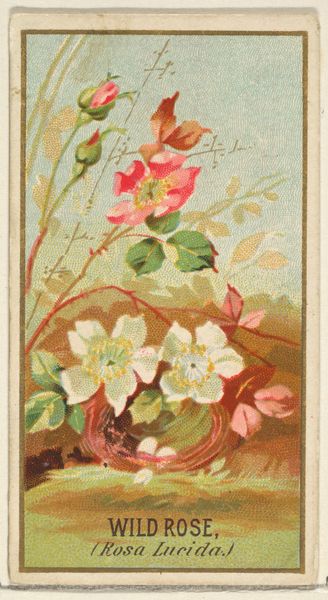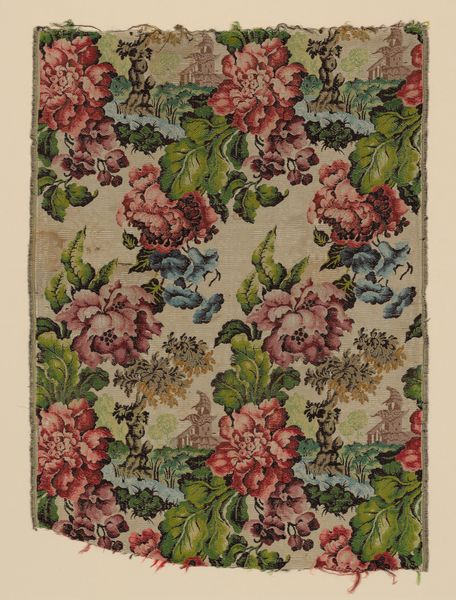
Forget-Me-Not (Myosotis palustris), from the Flowers series for Old Judge Cigarettes 1890
0:00
0:00
drawing, print, paper
#
drawing
#
art-nouveau
# print
#
impressionism
#
flower
#
paper
#
art nouveau
#
botanical art
#
watercolor
Dimensions: sheet: 2 3/4 x 1 1/2 in. (7 x 3.8 cm)
Copyright: Public Domain
Curator: This is a lovely example from the "Flowers" series, titled "Forget-Me-Not (Myosotis palustris)," created around 1890 for Old Judge Cigarettes by Goodwin & Company. It's currently housed here at the Metropolitan Museum of Art. Editor: Immediately, I'm struck by the shimmering, almost ethereal quality of the gold background against the delicate blue of the flowers. It feels very romantic, but also a bit… nostalgic, maybe? Curator: The use of forget-me-nots is quite poignant, especially given the context of the cigarette cards. The flower, with its clear symbolism for memory and remembrance, creates a sharp contrast against the ephemeral, easily consumed nature of the product it's promoting. One must wonder, is it a reflection on fleeting pleasures? Editor: That’s an interesting tension. I'm drawn to the materiality, though. It seems like a print with some hand-painted additions, perhaps watercolor? And the gold… it elevates what is essentially commercial ephemera. How did they mass-produce something like this, and what was the cultural value of these kinds of promotional images? Was there an intention behind that artistic labor to convey value and status? Curator: Precisely. It played on consumer aspirations and offered small aesthetic pleasures to people in their daily routines. In the Victorian era, the "language of flowers" was well understood. So, a brand subtly associating itself with fidelity and lasting memory could only stand to gain in perceived worth. Editor: So, on the one hand you have factory production and mass consumption, but it also uses symbolism with deep cultural roots and the delicate craft of hand-applied color. You wonder about the workshops where these cards were created. The gold backgrounds were they trying to mimic higher art, or precious metal? What statement was it making to potential buyers about the quality and aspirational character of the cigarettes. Curator: It does demonstrate how everyday objects can hold layers of cultural and emotional weight when you begin to unpack the layers. The association to memory, for such an everyday fleeting indulgence as a cigarette speaks of mortality, temporality. Editor: Exactly! It brings up interesting contradictions and social relationships about consumerism during that era. I now think I need a smoke! Curator: A fitting end for an image centered around memory and ephemerality!
Comments
No comments
Be the first to comment and join the conversation on the ultimate creative platform.
